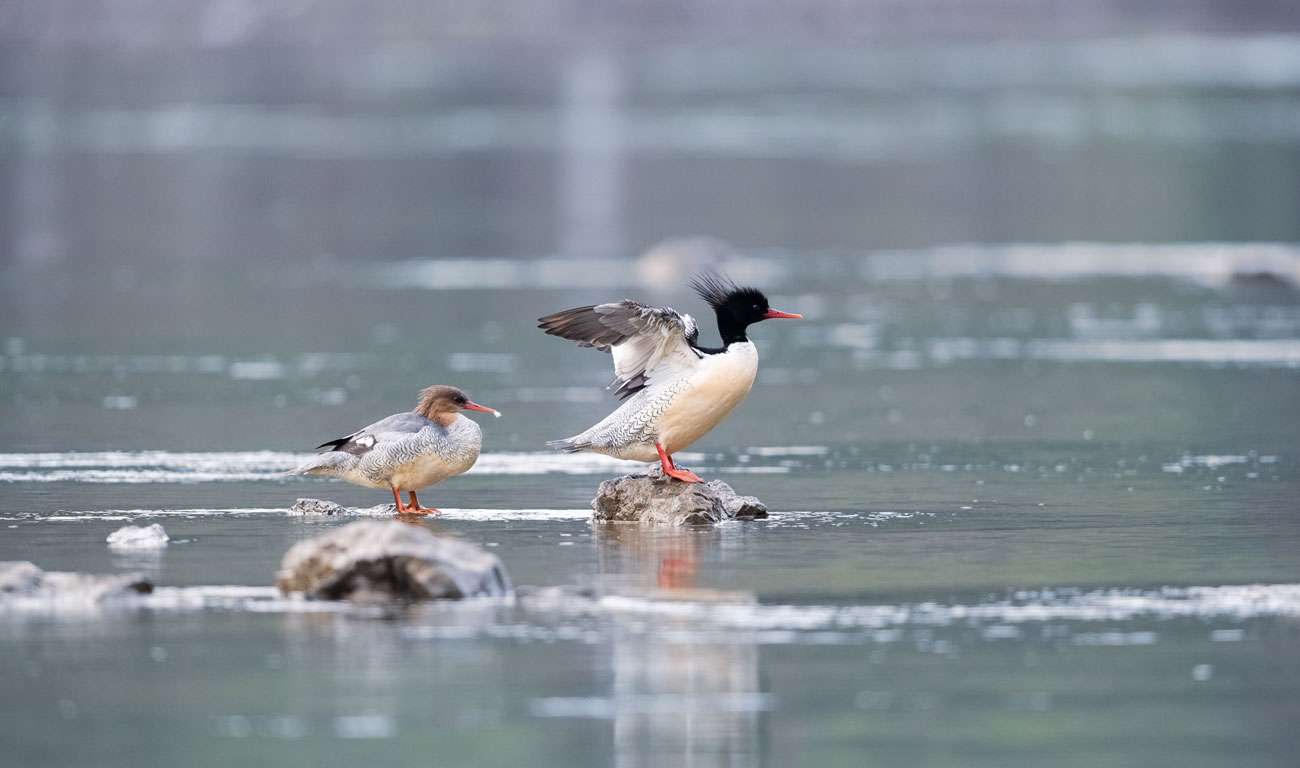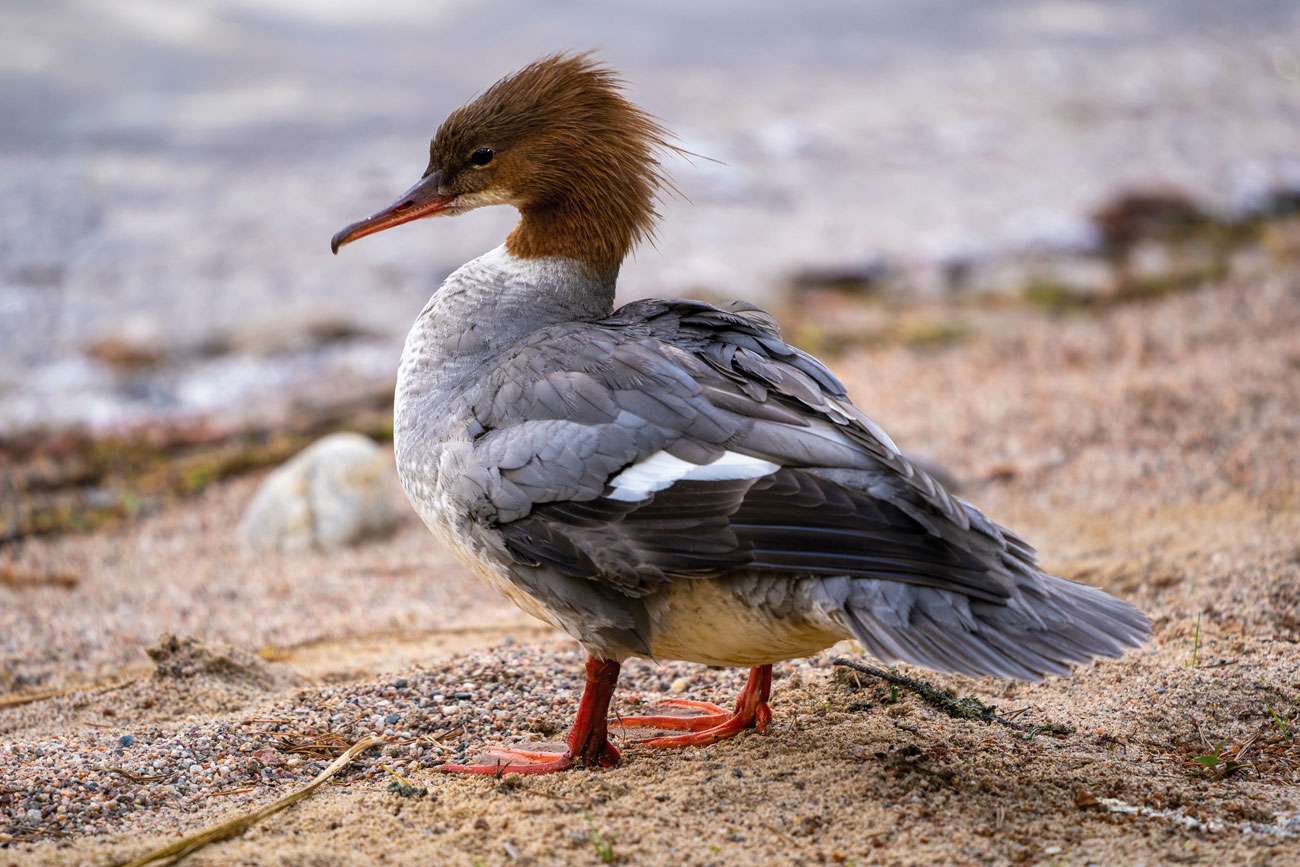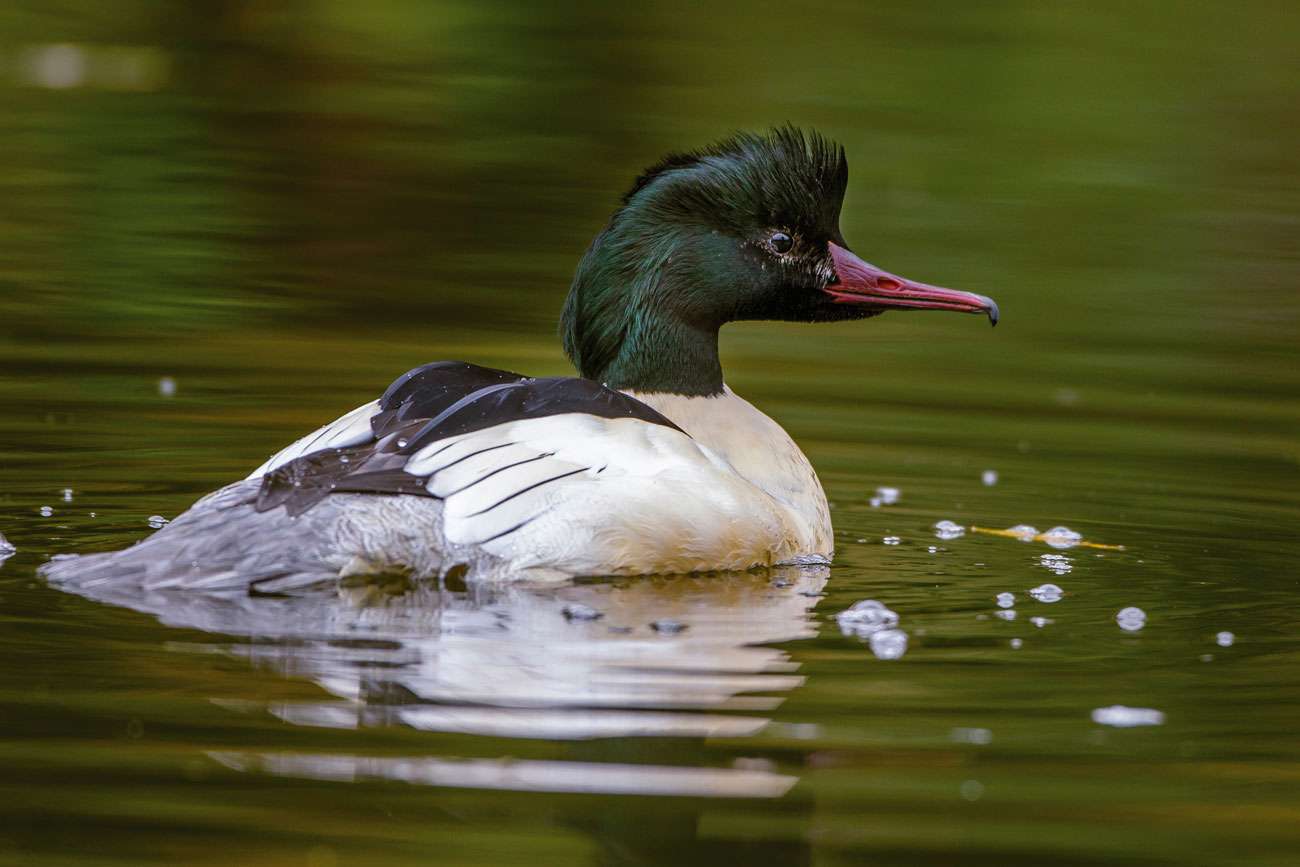
Goosander (Mergus merganser)
After a 900-plus mile drive north from Helsinki and through Lapland we arrived on the Norway border. Soon I was in a place I had dreamed of.
I’d longed to go to Varanger Fjord and witness its rich birding treats since, 30 years earlier, I got hooked while reading a second-hand copy of Richard Vaughan’s book Arctic Summer describing a similar journey of homage made from the Swedish side.
This book had languished in my library for many years and I often longed to go to this most northerly outpost above the Arctic Circle. Now hopes were coming true. I was there and it felt amazing! If not a trifle chilly.
I knew from the book that on the shores of the remote village of Nesseby was a church – and behind that a very special pool. The church stood out like a sentinel from the flat landscape. It was dazzling white but for a black spire puncturing the views of the snow-capped mountain background.
My travelling chum John Richardson and I cautiously walked round the church and I wondered if this holy sentinel had been a safe guardian to the ‘phalarope pool’ since Vaughan had written of his trip those long four decades before. Indeed it had!
There, on the mirror glass water, was one of our target summer visitors, a busy little wader that feeds as it swims and appears fuelled by clockwork. The Red-necked Phalarope was spinning around, first one way then another, to pick off flies from the surface. And there were many others too.
It was a surreal moment as I relived the pages of the book in real time. Birding often takes you to sites where the habitat has sadly vanished since the information was written. But now I was seeing for real what I feared would only be a historical record. Such relief!

Female Goosander (Mergus merganser)
Other birds present included some magnificent diving ducks from the ‘sawbill’ family. They do what it says on the tin and these Goosanders are equipped with the right tools for ensuring the fish they catch don’t slip easily away.
In that moment I gave them only a passing look because I was distracted by a passing monstrous White-tailed Eagle. And if that doesn’t distract you as its shadow blocks the sun then nothing will!
Had I known what I now know, I might have viewed the Goosanders for longer and pondered on just how amazing these birds are.
Yes, they are beautiful ducks. The males are black and creamy white with glossy dark green heads and a curve-tipped red bill. The females are very different with a shaggy ginger ‘hairstyle’ and grey and white body. Each sex has a notable white patch on its inner wing.
But while the plumage is impressive the most incredible thing about Goosanders was discovered only recently. And it answers a long- time mystery.
Where did the males breeding in Britain go between June and October? For years, birdwatchers could not find one among the moulting females who like to stay close to home.
The answer, it transpires, is that most of the mature ones fly north to a group of fjords in northern Norway in and around Varanger.

Male Goosander (Mergus merganser)
And after they moult many thousands of them get together with the lads for a male only party, particularly on the nearby Tana Fjord which opens out onto the Barents Sea.
Suitably re-invigorated the Brit boys then return home for a winter warm-up and are re-united with the girls. ‘Where you been?’ ‘Oh, just a few nights up north with only the lads – honest!’
Since first observing Goosanders in the Cranleigh area in the 1980s I concluded they were rare winter visitors but this species, which did not breed in Britain until a pair in Scotland in 1871, has been expanding its range.
They have regularly come south to Surrey’s larger reservoirs, small ponds and rivers in recent winters and I have seen increasing numbers.
They have also been noted just over the West Sussex border on the River Arun at Pulborough, and nearer home on the River Mole in Dorking and Leatherhead, Cutt Mill Pond in Puttenham, and Pennymead Lake in East Horsley.
One frosty January morning I watched a line of five flying over the garden. Couldn’t believe it! Initially I thought these long-necked birds were the daily Cormorants but as they whizzed above I realised they were too small and flying too fast.
In the last few winters there have been regular reports in Surrey and during the winter just gone I enjoyed a number of flyover sightings and them – or others – in and around Cranleigh’s network of small ponds. They seem to do a tour of various waters and are easily disturbed so tread carefully.
If your holidays (remember them?) take you to Wales, Devon, northern England or Scotland then you might get closer views. Look out for them on fast flowing rivers and lakes.
Holes in trees are also favoured for nesting. Seems like the boys had to return. There aren’t so many trees in Norway…
Twitter – @Crane_Spotter
Click here to see all of Robin Stride’s previous Crane Spotters.











